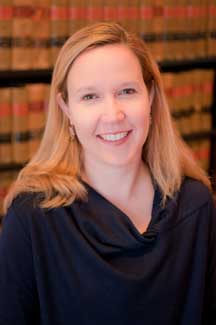For many years, the Supreme Court did not weigh in on, or otherwise get involved in, states’ efforts to draw their legislative districts. The results weren’t pretty: even as large numbers of people moved from rural areas to more urban ones, legislative boundaries remained the same. This meant that, compared with their suburban and urban counterparts, districts in rural areas were often underpopulated – sometimes for decades.
But in 1964, the Court held for the first time that a state legislature’s districts must contain near-equal numbers of people – a principle known as “one person, one vote.” The Court did not, however, say what metric states should use to create those districts. Texas and all of the other forty-nine states use the total population – that is, the overall number of people. But a few years ago, two Texas voters went to court to challenge the state’s use of total population, arguing that the state should instead look to the number of eligible voters. Their argument? Their districts contain very high numbers of eligible voters in their districts, which means that their votes count less when compared with voters in districts with roughly the same total population but lower numbers of eligible voters. And that, they say, is a violation of “one person, one vote.”
This is not simply an abstract, academic question. The Court’s answer could have significant real-world implications, including because urban areas – which tend to favor Democratic candidates – usually have more young people and non-citizens, who are not eligible to vote, while more rural areas – which tend to favor Republican candidates – often have more eligible voters.
Yesterday’s unanimous decision by the Supreme Court leaves the status quo in place (which helps the Democratic Party): state and local governments may continue to use total population to draw legislative districts. Justice Ruth Bader Ginsburg authored the Court’s opinion, which had the support of Chief Justice John Roberts and Justices Stephen Breyer, Sonia Sotomayor, and Elena Kagan.
For these five Justices, it was a relatively easy conclusion. The Court first found support for its ruling in the history of the U.S. Constitution. When the Constitution was drafted, and again when the Fourteenth Amendment was ratified, Ginsburg explained, the Framers made clear that members of the House of Representatives were to be divided among the states based on each state’s total population. It would be an anomaly, Ginsburg continued, for the Constitution to require states to draw federal congressional districts based on total population, but at the same time prohibit states from doing the exact same thing for state and local legislative districts.
Similarly, Ginsburg added, when determining whether a legislative map violated the principle of “one person, one vote” by distributing the population among districts too unevenly, the Court has looked at total population, rather than the number of eligible voters. “It would hardly make sense,” she observed, for the Court to require equal numbers of voters but use total population to determine whether legislative districts in fact have those equal numbers.
And finally, Ginsburg emphasized, states and local governments have been using total population to draw legislative districts “for decades, even centuries.” A ruling that required them now to start using the number of eligible voters instead would not only upset the apple cart, but it would also be contrary to the principle behind the use of total population – the idea that elected officials “serve all residents, not just those eligible or registered to vote.”
Justice Clarence Thomas agreed only that Texas and other state and local governments may use total population to draw their legislative districts. But he declined to endorse the Court’s reasoning. Instead, he believes that the Constitution doesn’t even require states to adhere to the principle of “one person, one vote.” Rather, it deliberately gives the states a lot of leeway to decide how to structure their governments – requiring only that states have a “Republican Form of Government,” without specifying what that entails. So although the use of total population is certainly a permissible choice, as far as Thomas is concerned, there is “no single ‘correct’ method of apportioning state legislatures.”
Thomas also joined most (although not all) of a separate opinion by Justice Samuel Alito. Like Thomas, Alito agreed that Texas can use total population to draw its legislative districts, but he would go no further than that. And, he made clear, the question whether states can use some other metric to draw their legislative districts remains open – which means that it could be back at the Supreme Court again at some point in the not-too-distant future.

